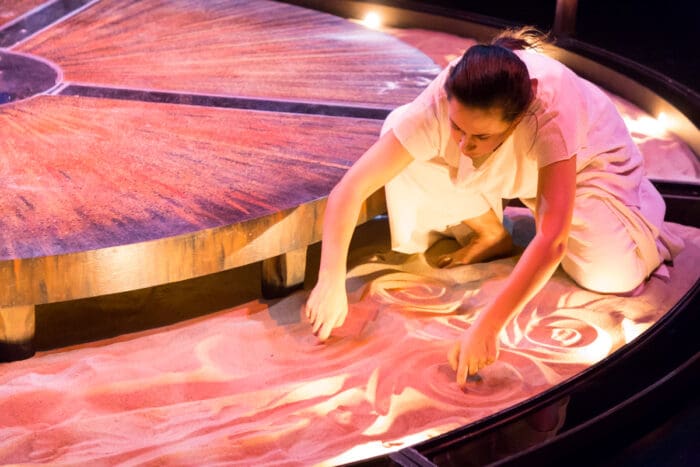
Last Thursday I had the privilege of attending Finding Wolastoq Voice, a collaboration between playwright and composer Natalie Sappier -Samaqani Cocahq of Tobique First Nation and dancer/choreographer Aria Evans (Mi’kmaq/Black/British). Finding Wolastoq Voice is a Theatre New Brunswick Production presented by Native Earth Performing Arts as part of the Niimi’iwe: Indigenous Dance Showcase.
The naturalistic set invokes a medicine wheel, the stage itself fashioned as a tree trunk about three meters wide contains much of Evans’ movement. A ring of sand encircles the trunk wide enough for Evans to step down into and dig up long curved wooden spines that become the silhouette of a built shelter. Two water channels intersect to divide the trunk into quarters, the entire set a self-contained world that shifts organically through the story and Evans’ performance. Although the performance was contained to a relatively small space, Evans’ movements are both expansive and grounded.
Finding Wolastoq Voice is a deeply personal story, a recounting of childhood freedoms as well as childhood abuses, an enclosing darkness that steals a young women away from her sense of place and community, and then with grace and hopefulness—by awakening to the sounds and voices of her ancestors—the process of healing from the trauma. Evans’ grounded movements complement Sappier’s storytelling with a soul-breaking evocativeness that lingers after the show had ended.
